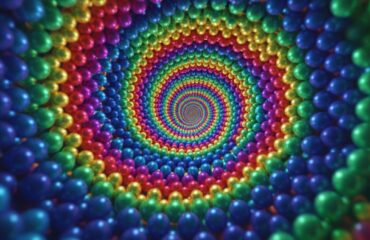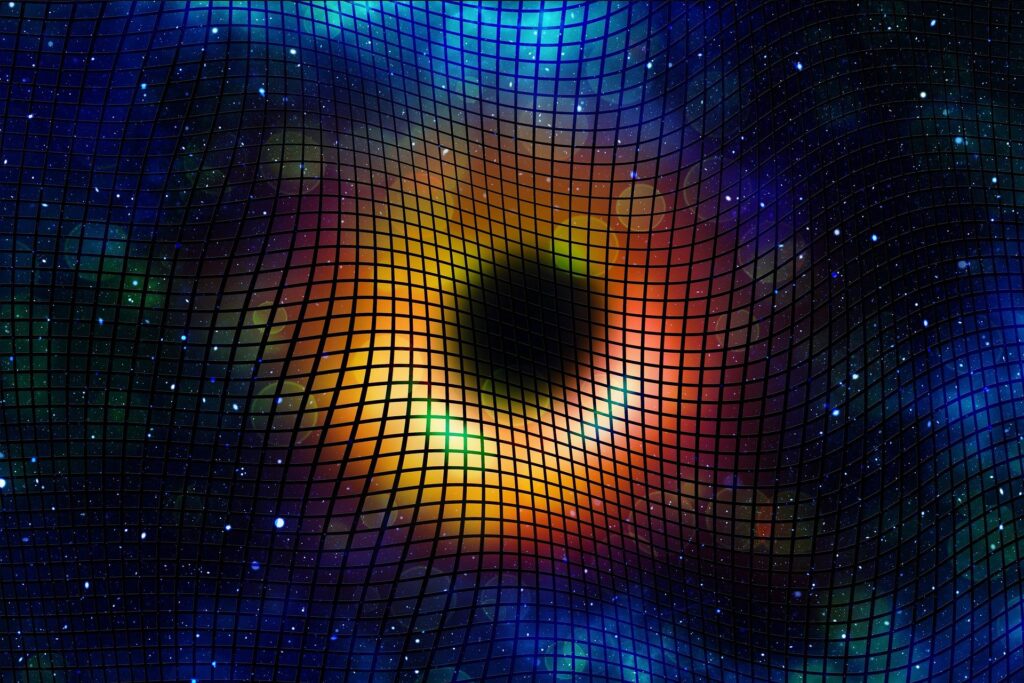
Illustration of a black hole and spacetime grid by Gerd Altmann, of Pixabay.
By James Myers
Computer science professor Lior Shamir has observed a curious pattern in the universe. Using images captured by the James Webb Space Telescope (JWST), Dr. Shamir compared the rotations of 263 galaxies and found that about two-thirds of them turn in a clockwise direction, while about one-third rotate counter-clockwise.
Published in the latest edition of the Monthly Notices of the Royal Astronomical Society, Dr. Shamir’s study states that the rotational difference is “so extreme that it can be noticed and inspected even by the unaided human eye,” although his analysis was performed using computer-assisted measurements.
The study notes that among spiral galaxies, the number that rotate in an opposite direction to our Milky Way is approximately 50% greater than those that turn in the same direction. An asymmetry in galactic rotations was first noted in the 1980s using Earth-based telescopes, but the clarity of data obtained from the JWST that’s located 1.5 million kilometres from Earth has revealed a pattern in the difference. The latest data show that rotational asymmetry increases in proportion to a galaxy’s redshift, the frequency of light that measures its distance from Earth.
The data suggest that galactic rotation is not random but, as Dr. Shamir states, organized around a cosmic-scale axis that could be driven by the spinning of a surrounding black hole.
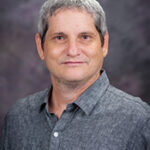
Dr. Lior Shamir, associate professor of computer science at Kansas State University. Image: KSU
“It is still not clear what causes this to happen, but there are two primary possible explanations,” Shamir said. “One explanation is that the universe was born rotating. That explanation agrees with theories such as black hole cosmology, which postulates that the entire universe is the interior of a black hole. But if the universe was indeed born rotating it means that the existing theories about the cosmos are incomplete.”
Dr. Shamir notes the possibility that the distribution of galaxies rotating in a direction opposite to our Milky Way could be a distortion caused by our own galaxy’s motion. The Milky Way’s rotation could theoretically amplify the light of counter-rotating galaxies, skewing the proportion that appear to be turning in the opposite direction.
The existence of counter-rotating galaxies within a black hole would challenge the long-held cosmological principle, which states that at large scales the universe is the same – or isotropic – in all directions. Other challenges to the cosmological principle are also emerging; as we noted last March (see The Big Ring: Is the Newly Found Cosmic Megastructure the End for the Cosmological Principle?), the discovery of a giant ring structure 9.2 billion light years from Earth provides another example of unexpected asymmetry.
Much remains to be discovered about the physical causes of galactic rotation. Scientists continue to search for evidence of the properties of dark matter and dark energy, forces that are not directly observable but are theorized to pull and push on cosmic objects like galaxies, changing their rotation in the process. As massive as galaxies are, it’s theorized that dark matter and dark energy account for 95% of the mass of the universe.
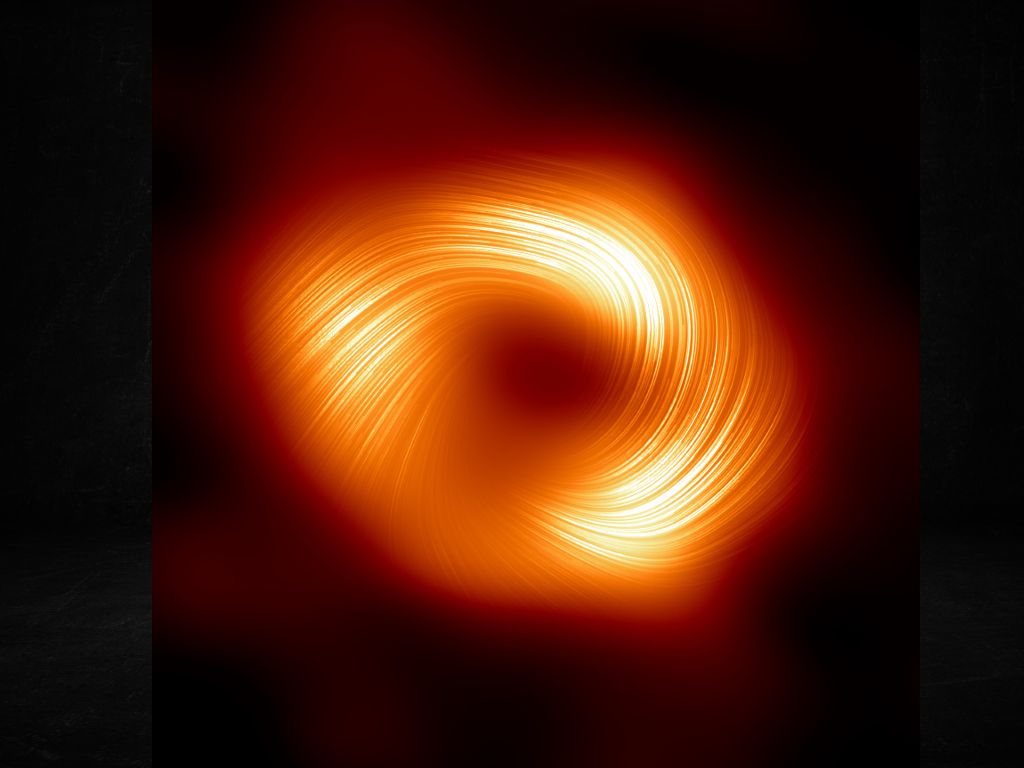
Image of the supermassive black hole called Sagittarius A* at the centre of the Milky Way Galaxy taken by the Event Horizon Telescope, with lines overlaid to show the orientation of its magnetic polarization. Released in March 2024, this image represents the first time that astronomers have been able to measure polarization, a signature of magnetic fields, at a distance close to the edge of Sagittarius A* and the black hole’s event horizon, where space and time end. Image: Event Horizon Telescope Collaboration
First appearing over five decades ago, the idea that we might be living inside a black hole is not new.
One of the earliest proposals that we inhabit a black hole was published in the December 1972 edition of Nature. The author, theoretical physicist R.K. Pathria, advanced the theory that “the universe may not only be a closed structure (as perceived by its inhabitants at the present epoch) but may also be a black hole, confined to a localized region of space which cannot expand without limit.”
In this sense, the boundary of the black hole would act as a container, constraining the continuing motion of its contents to a defined area, like a ball trapped in a cylinder might move. Although the boundary, called the event horizon, of a black hole is observationally impenetrable, analysis of x-rays and other energetic disruptions caused by the massive object point to a similarity of motion both within and outside a black hole.

Physicist and astronomer Karl Schwarzschild (1873-1916) was the first to derive an exact solution using Einstein’s field equations. Image: Wikipedia
The theory that we live in a black hole is called cosmology theory, or sometimes Schwarzschild cosmology after physicist Karl Schwarzschild. A related theory, called shockwave cosmology, proposes that the Big Bang occurred inside a black hole that continues to expand from the shockwave unleashed by the massive explosion. In shockwave cosmology, the density of matter decreases as it further distributes into the hole’s expanding volume, reaching a point of zero density at the hole’s event horizon.
The event horizon is the limit of a black hole beyond which light cannot escape. The event horizon is measured by its Schwarzschild radius, a small circular limit that Karl Schwarzschild calculated relative to the hole’s mass by applying Einstein’s theory of general relativity. If we live inside a black hole, the event horizon would appear to us as the minimum opening in the hole that keeps light trapped inside, but if we were outside it would appear to be the compression limit of space and time’s fabric as it winds around the massive object.
In black hole cosmology, what appear to us to be black holes in the middle of all galaxies including our own are, in fact, wormholes that could serve as conduits through vast cosmic distances within the black hole. In 1935, Albert Einstein and Nathan Rosen established the theoretical possibility of wormholes, which are also called Einstein-Rosen bridges, although astronomers have yet to identify one.
The Big Bang theory holds that the universe was formed in a massive explosion, but significant problems with the theory include the unresolved questions of cause and why an originally ordered state is producing increasing disorder among cosmic objects. In his June 2022 Royal Institution lecture (see YouTube video below), physicist James Beacham suggests that the expansion of the universe – which was first observed in 1998 – is evidence that everything originated from an infinitely dense point called a singularity that exists in the middle of a black hole.
In this Royal Institution lecture, physicist James Beacham states (at 30:00) that “It turns out that the mathematics of the interior of a black hole is almost identical to the mathematics of the exterior of a black hole.”
Beacham asks, “Does this mean that our universe, which was born from a Big Bang 13.8 billion years ago, actually birthed from a black hole in another universe, and does that mean that black holes in our universe are doing the same thing? Every black hole could be a seed to a new universe.”
What would it be like to live inside a black hole?
The latest evidence of black hole cosmology begs the question: if we knew we were living inside a black hole, what would it mean and how would it change our perception of everything around us?
For one, it could lead to a change in the way that we measure distances.
Addressing the possibility that the galactic rotational pattern that he observed might be a distortion of the Milky Way’s own motion, Dr. Shamir stated, “If that is indeed the case, we will need to re-calibrate our distance measurements for the deep universe.” He explained that re-calibration could also help to resolve wide differences in estimates of the cosmic expansion rate as well as the question why the distance measured to some galaxies show them to be older than the universe itself.
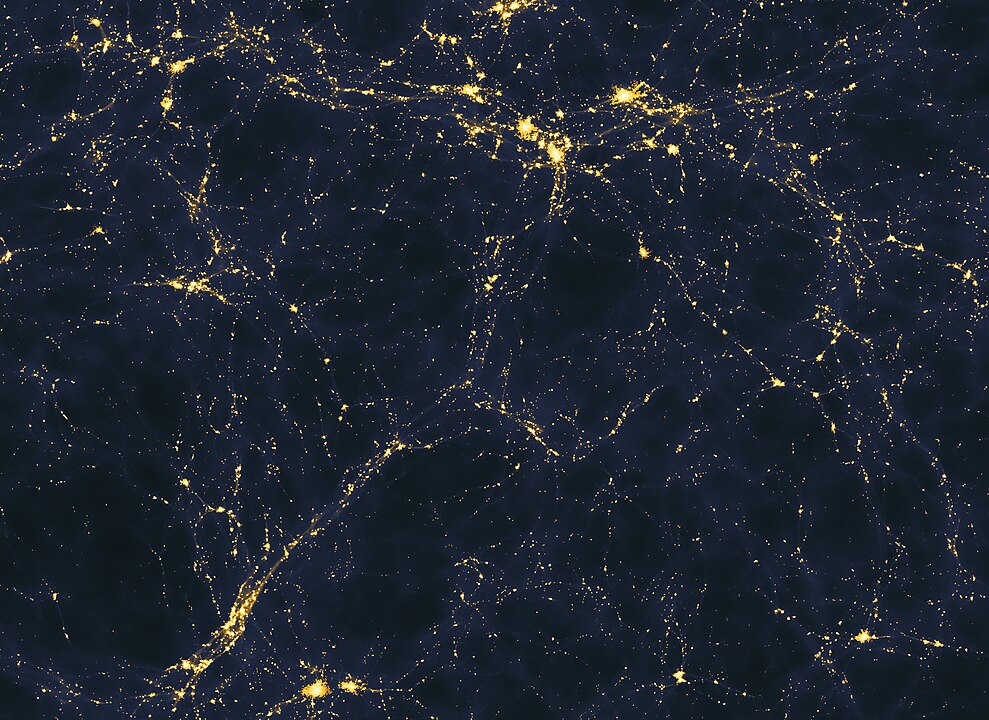
Galaxies are organized in what appear to be long filaments, each containing millions of galaxies and together forming a “cosmic web” that align with edges of voids in space. Our measurement of some galaxies, however, paradoxically shows them at a distance that would place them before the birth of the universe 13.8 billion years ago. Image by Andrew Pontzen and Fabio Governato, on Wikipedia .
Is time linear or circular, and is it time to recalibrate our measurement of time?
If the observed two-thirds clockwise and one-third counterclockwise rotational pattern of galaxies turns out not to be a distortion, and proves to be evidence of an axis within a black hole, we would also have to consider where measurement of time begins, if it begins at all.
It’s commonly thought that measurement began 13.8 billion years in the past, with a Big Bang that exploded energy and mass into empty space. But what if time has no measurable beginning?
If the physical universe was born inside a black hole, whose event horizon prevents energy and mass from escaping, does time actually operate continuously, circulating inside the black hole with no particular beginning and no specific end? For time to have had a beginning, it would be necessary than nothing existed previously – but if a black hole had parented the universe, the hole’s existence would be evidence of a previous time.
If it were proven that we live inside a black hole that’s ballooning out in the shockwave of a Big Bang from within, it could change our sense of time’s direction. Time would no longer be driving us from behind, but resonating all around us.
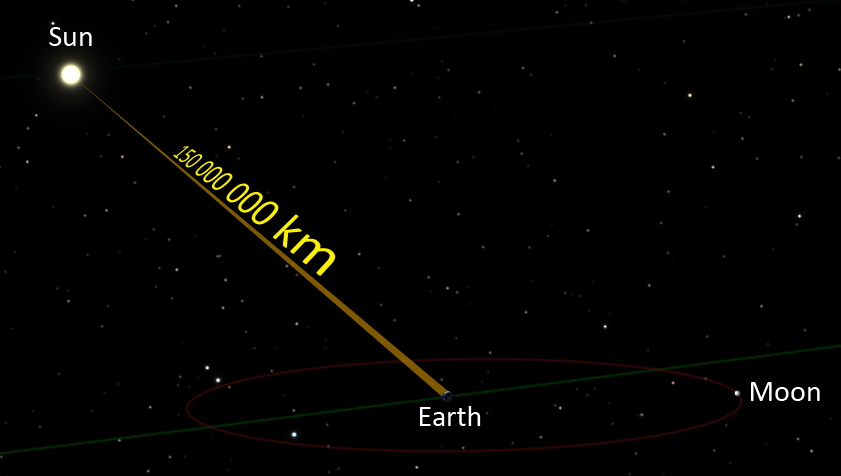
In a linear depiction of time, at 299,792,458 metres per second, light requires little more than 8.3 seconds to span the distance to the Earth. Image by VB, on Wikipedia .
The prevalent idea that time began 13.8 billion years ago makes us think that we, in the present, are living at the leading edge of an explosion of physical energy and mass that gave birth to physics a very long time in the past. This is a linear view of time, a timeline that has either one limit (the past) or two limits (if we think at some point there will be no more future). There is, however, an unlimited way of viewing time.
If the physical universe exists inside a black hole, which would mean that time has no beginning, then we wouldn’t be standing in the present at the leading edge of a linear process that began billions of years ago. Instead, we would be precisely in the middle of time – in time’s focal point – with what we call the past and future circling around us equally and neither having a limit.
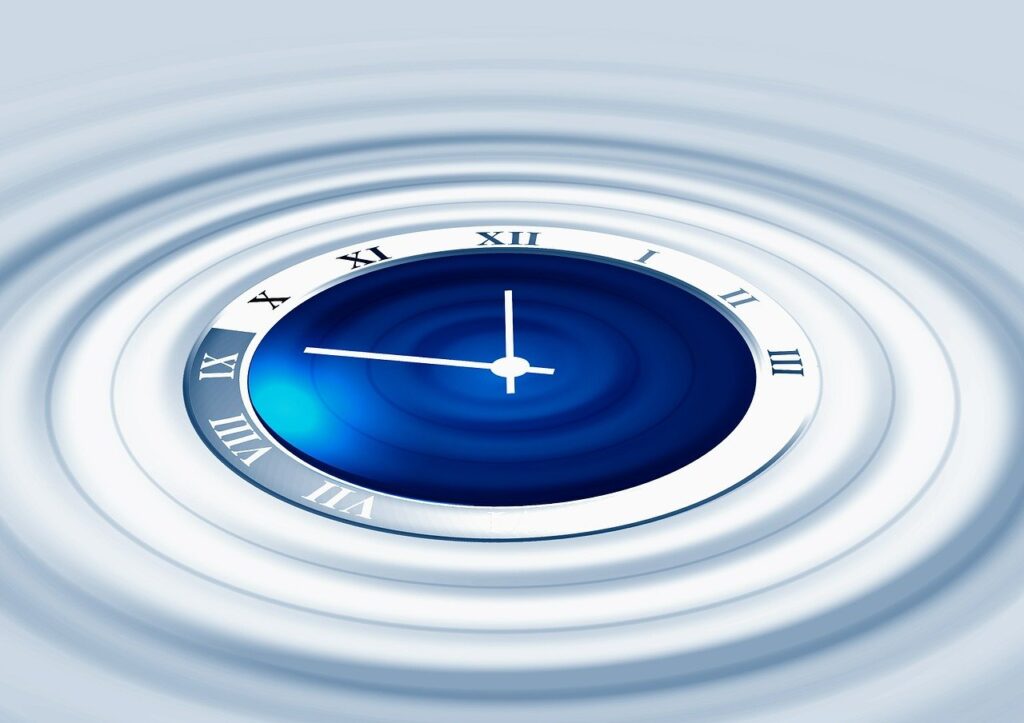
Is time circling and resonating all around us, with no beginning and no end? Illustration by Gerd Altmann, of Pixabay .
If past and future surrounded us equally, maybe we would consider changing our words for time.
Newton’s second law of motion might give us more accurate alternatives: instead of saying “the past” we would refer to “the cause,” and we would replace “the future” with “the effect”. The definition of time might become less elusive, if we define it as “the cycle of cause and effect.”
How does that sound? Granted, what would remain unanswered is the question of the original cause of time itself.
Craving more information? Check out these recommended TQR articles:
- How Many Languages Are There? Scientists Shed Light on What Animals Other Than Humans are Saying
- Wild Mathematics: Scientific Evidence of the Numerical Abilities of Animals
- Scientists Call for Halt to Creation of Mirror Bacteria, Warning of Global Risk to Life
- Time, the Sun, and Life: Even Bacteria Know When Earth Makes a Seasonal Change
- James Webb Space Telescope: Stunning Images Deliver New Insights on the Big Bang and Early Universe




